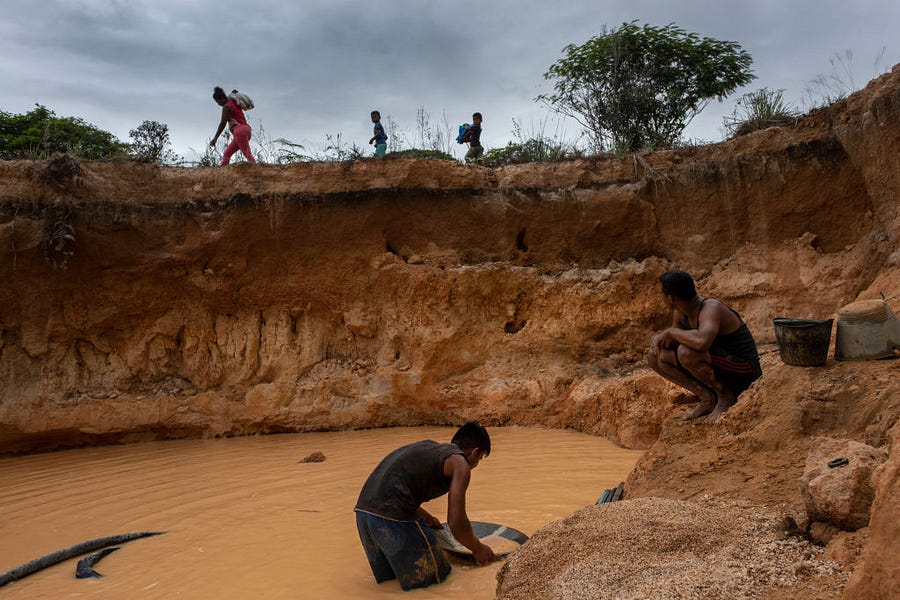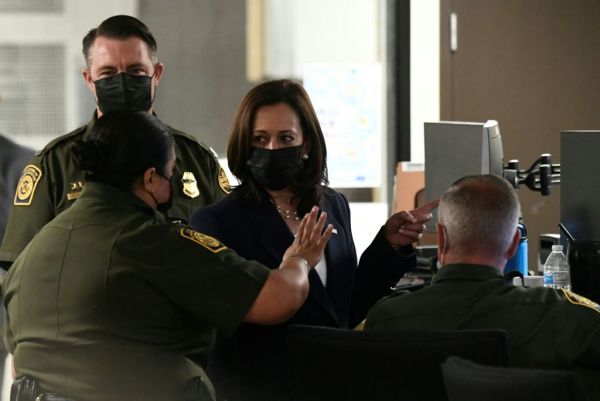Last week, climate czar John Kerry flew to Europe to advance the Biden administration’s policy agenda ahead of the Leaders Climate Summit that President Biden will host on Earth Day, April 22. The summit provides an opportunity for Biden and his foreign counterparts to recognize that transnational corruption and organized crime are both key drivers of climate change because of their role in reckless deforestation.
President Biden has put both climate change and the fight against global corruption at the center of U.S. national security and foreign policy. He is right to do so, but he needs to recognize these are not separate issues. Authoritarianism, government corruption, and organized crime have been complicit in some of the most egregious environmental crimes of our era. Therefore, a successful climate strategy must integrate efforts to promote transparency and good governance. This should include deployment of all available tools of statecraft and law enforcement, like sanctions, travel bans, asset freezes, and indictments, to go after those who are making our planet less inhabitable.
The Climate Council reported in 2019 that the loss of forested areas in tropical regions contributed the equivalent of 8 to 10 percent of human carbon emissions in the years 2015-2017. According to the International Panel on Climate Change, deforestation and degradation of other natural habitats accounts for 13 percent of human emissions linked to agriculture, forestry, and other land uses. The actual figure might be higher.
Trees are the most effective, low-tech solution for carbon capture. Reforestation, “rewilding,” and conservation are key components in the fight against climate change, comprising both national and international initiatives, like New Zealand’s One Billion Trees Program and Africa’s Great Green Wall. But reforestation is not offsetting the dramatic shrinking of woodlands, especially in tropical regions where the largest concentration of forest land is. More trees are being cut than are being planted.
President Biden clearly made reforestation an integral part of his climate policy launched with his January 27 executive order on climate, where the president instructed the Department of Treasury to develop “a plan for promoting the protection of the Amazon rainforest and other critical ecosystems that serve as global carbon sinks.” The same holds true for reforestation at home, a target the president tasked the Department of the Interior to pursue.
But let us face it. For America to be a global climate leader, it is not enough to emulate ambitious reforestation projects. Washington needs to aggressively tackle the causes of global deforestation and go after its culprits, in order to help preserve ecosystems that are vital to our planet’s survival.
That means recognizing organized crime is a key driver of deforestation and environmental degradation; corrupt and authoritarian governments are key facilitators of both. According to the World Wildlife Fund, illegal logging accounts for 50 to 90 percent of all deforestation in tropical forests and up to 30 percent globally, according to Interpol’s Project Leaf figures.
The evidence of a climate change-crime-corruption connection is overwhelming and global. Illegal mining in Venezuela, with the complicity of the Maduro’s Bolivarian regime, is contributing to a dramatic spike in deforestation. Supervised by Maduro’s security apparatus, illegal mines clearing vast forest areas are polluting the Orinoco river basin, spilling mercury and cyanide over into neighboring countries and the Caribbean sea, thus contributing to an environmental catastrophe far beyond Venezuela’s borders, which will take generations to reverse.
In Brazil and elsewhere in Latin America illegal mining is rampant—plots of Amazon forest are even on sale, illegally, on Facebook—and the forest is not the only victim. There is also systematic pollution of river basins, the rise of criminal gangs that are sometimes state-affiliated to “protect” the business and illicit finance downstream, as illegal minerals are sold and their proceeds laundered to conceal their origin. Other side effects include violent crime, sex trafficking, money laundering, and corruption. No wonder the FBI considers it a threat to U.S. national security.
Forest clearing is also a direct consequence of drug trafficking. In Colombia, cartels are behind the dramatic loss of rainforest, as they constantly seek new farmlands to grow coca.
Elsewhere, in the Democratic Republic of Congo, at least 30 percent of wildlife illicit trade, illegal mining, and logging funds transnational organized crime.
Much of this illicit activity is only possible because corrupt officials take bribes to look the other way. A recent exposé by the Organized Crime and Corruption Reporting Project revealed how Chinese companies, with the complicity of local corrupt elites, are harvesting protected trees in Namibia. In other places, like Paraguay and Honduras, corruption has benefited local elites, with Paraguay’s authorities enabling deforestation for cattle grazing and charcoal overproduction in the Chaco, Latin America’s second-largest forest concentration. In some cases, charcoal is being used as a cover for drug trafficking. Honduras’ river degradation is the by-product of deforestation in conservation areas facilitated by government corruption. The list is long.
Deforestation, a contributing factor to climate change, is not just an environmental problem. It is a symptom of a wider threat, requiring a tough policy approach not just wedded to harnessing clean technologies. Putting climate at the center of national security and foreign policy means also taking energetic action against those criminal networks and widespread corruption that feed into the systematic destruction of the environment.
The good news is that the Biden administration has an arsenal of tools available to hit back. Corruption cases described above warrant Global Magnitsky sanctions, which target corrupt foreign officials and their families. Naming and shaming through Global Magnitsky sanctions can have dramatic repercussions for their fortunes at home. Such sanctions deny access to U.S. visas and expose U.S. held assets to seizure. The U.S. should use this tool more often to name those behind egregious cases of deforestation and other environmental outrages.
Companies that are involved in illegal logging and other related environmental crimes could be cut off the U.S. financial system and blacklisted. Beyond sanctions, directing law enforcement to focus on egregious environmental crimes can be helpful, especially if U.S. law enforcement agencies expand partnerships with local authorities. While actual deforestation may be beyond jurisdictional outreach for U.S. authorities, oftentimes money laundering of illicit proceeds for activities that involve deforestation frequently go through the U.S. banking system. That gives U.S. prosecutors jurisdiction. Washington can assist with training, equipment, and incentives to help partners build capacity in the pursuit of environmental crime. The federal government should also work with Silicon Valley social media giants to clamp down on the use of their platforms to conduct environmental crimes. The Justice Department should consider forfeitures of assets seized, casting the net wider to target the laundering of revenues generated by these environmental outrages. Assets seized can be reinvested into conservation projects.
The president’s instincts to tackle climate change and reverse the tide of global corruption and crime are correct. What the administration needs to emphasize is that the two policies are not separate, but integral to one another. Punishing those who, through their greed and crime, compound the threat of climate change, should become a priority of the Biden Administration.
Emanuele Ottolenghi is a senior fellow at the Foundation for Defense of Democracies.








Please note that we at The Dispatch hold ourselves, our work, and our commenters to a higher standard than other places on the internet. We welcome comments that foster genuine debate or discussion—including comments critical of us or our work—but responses that include ad hominem attacks on fellow Dispatch members or are intended to stoke fear and anger may be moderated.